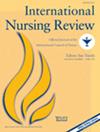The International Advanced Practice Nurse Integration Policy Intervention Taxonomy: A 10-Country Nominal Group Consensus Technique Study
Abstract
Aim
To develop an international taxonomy of policy interventions for integrating advanced practice nurses into health systems.
Background
Advanced practice nurse integration is the extent to which advanced practice nurses can function to the full extent of their education and scope of practice and contribute to better outcomes. Several barriers to integration are common across countries, such as an ill-defined scope of practice, lacking leadership engagement, and insufficient knowledge of the role. Barriers are attributed to a dearth of knowledge on evidence-based policy interventions guiding integration.
Methods
This was a nominal group expert consensus study with participants from multiple countries. Participants were divided into three meetings consisting of silent review of a preliminary taxonomy developed from a literature review and single-country testing, round-robin feedback, live revisions, and consensus voting. Each meeting resulted in a unique taxonomy, which researchers synthesized into one version. The synthesized taxonomy was sent for member checking and final consensus voting. The Accurate Consensus Reporting Document was used.
Results
There were 12 experts representing 10 countries. Fifty-nine policy interventions were mapped to 14 categories. National-level categories included regulation, economic incentives, stakeholder cooperation, education and workforce development, marketing, and research. Organizational interventions included organizational guidelines, infrastructure development and resource allocation, interprofessional leadership engagement, and organizational messaging. Care team–level interventions included interprofessional experience/exposure, team communication, work environment, and research opportunities.
Discussion
This taxonomy builds on prior research by including participants across countries with varying health system governance, wealth, and advanced practice development.
Conclusion
Applying this taxonomy may contribute to more efficacious advanced practice nursing integration and potentially improve outcomes.
Implications
A guide for adapting interventions to a health system, organization, or care team is included.


 求助内容:
求助内容: 应助结果提醒方式:
应助结果提醒方式:


